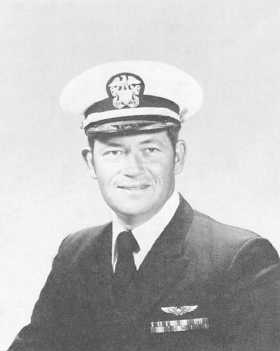302.159.1
Figure 7-5.–Subject placed too low in the photograph.
Most inexperienced photographers place the head
too low, rather than too high. This is usually the result
of the photographer's desire to show as large a head as
possible. When the head is too low, there is not enough
body to support it (fig. 7-5).
When the head is turned toward the side, avoid
having the tip of the nose from coinciding with the
outline of the cheek or projecting only slightly beyond
the cheek line. In either case, the far eye will be divided
by the nose. When the tip of the nose sticks out only a
little beyond the cheek line, it appears as a lump on the
cheek
Before you seat a subject, suggest that the subject
may like to check his or her appearance in a mirror.
Combing the hair, straightening a tie, setting a hat at the
proper angle, and smoothing out the lay of the clothes
should ensure a neat, well-groomed appearance. When
the subject is in military uniform, be sure that medals,
ribbons, insignia of grade or rate, and other accessories
are worn properly. These minor details are easily
overlooked and failure to correct a discrepancy may
make it necessary to retake the portrait.
When a military subject is seated, one particularly
important point to consider is the lay of the coat collar.
The collar has a tendency to separate from the back of
the subject's neck and project outward resulting in the
impression of a hump. The coat should be pulled down
to make the collar fit properly and make the line of the
subject’s back appear free from slouch or slump. When
the portrait includes only the head and shoulders, the
drape of the coat can be improved by unbuttoning the
lower button and pulling the bottom of the coat down.
The sleeves of a coat are another problem,
particularly when you photograph a seated subject.
There is a tendency for the sleeves to work up and
wrinkle at the elbows, allowing either too much wrist or
too much shirt cuff to show. To help remedy this, have
the subject pull the sleeves of the coat down and
straighten out the wrinkles as much as possible.
Wrinkles, folds, and unwanted creases in a uniform
detract from a neat appearance. When the subject is
wearing a long-sleeved shirt under a coat and the hands
will appear in the portrait, both shirt cuffs should be
visible or both should be out of sight. Do not have one
cuff visible and the other not.
Stay near the camera and tell the subject what to do.
You are obligated to give directions regarding the pose.
A subject is not able to see all posing aspects for the
portrait. Whether the subject is an admiral or seaman,
you are expected to detect and correct any discrepancy
in pose, uniform, gestures, or actions, and so on. One of
the greatest obstacles to successful portraiture is the
timidness of some photographers and the way they
handle the subject. Never take a portrait when
something about the portrait is wrong because of fear or
timidity to speak and act in the presence of high grade.
The results will be disappointing and embarrassing.
When the military subject is to be photographed
uncovered, be sure that the hat is removed far enough in
advance so any impression on the forehead caused by
the hatband has time to disappear.
When the subject shows a tendency to squint or
blink, suggest that he rest his eyes by closing them for
a moment. The facial expression is an important element
to a good portrait. Unless some method is used to induce
a pleasant expression, the subject will generally appear
bored and uninteresting. Telling a subject to look this
way or smile is not enough to cause the subject to smile.
A forced smile sometimes looks more like a frown. A
good method to get a pleasant expression is through
conversation. Talk about a recent incident, a funny story,
the weather, or any other topic that will cause the subject
to concentrate on something other than the business of
making a portrait. With most people, a smile is
contagious. When you smile at a person, the person
usually responds with a smile. Beware of a broad smile
7-8



